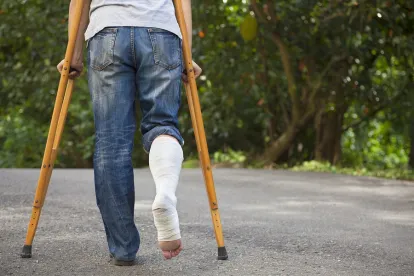The question of whether a slip and fall that occurs within a hospital constitutes medical malpractice, rather than ordinary negligence, has been a much debated topic. The distinction is important because, in Pennsylvania and other states, there are a number of procedural hurdles—which do not apply to an ordinary negligence case—a plaintiff must first tackle in order to successfully file and pursue a medical malpractice case. Whether a case is classified as medical malpractice or general negligence can have a substantial impact on the cost of litigation and strategy needed.
There has been some inconsistency in determinations among Pennsylvania courts, as well as courts in other states, on this issue. This makes it very difficult to determine or predict whether a hospital fall case will be deemed a medical malpractice and, therefore, subject to the medical malpractice procedural requirements.
In Texas, which has tough medical malpractice requirements similar to those in Pennsylvania, doctors and hospitals have historically tried to use those requirements to have premises liability—otherwise referred to as “slip and fall”—cases which occurred in hospitals dismissed on procedural grounds. Recently, however, the Texas Supreme Court effectively put a stop to this.
In Texas, once more, similar to Pennsylvania, a plaintiff must obtain opinion from a medical expert confirming that medical negligence occurred before the case can proceed. If the plaintiff \ fails to obtain the requisite medical expert opinion, the Court can throw the case out. In two decisions that came down this year, Ross v. St. Luke’s Hospital and again in Reddic v. East Texas Medical Center, the Texas Supreme Court held that there must be a “substantial nexus” between the fall and the provision of health care before the plaintiff can be held to the state’s medical malpractice procedural requirements in a hospital fall case.
In Reddic, decided on October 30, 2015, the Court stated that there must be “a substantive relationship between the safety standards the visitor alleged the hospital breached and the provision of health care” for the case to be considered medical malpractice. The Court concluded that the record in that case did not demonstrate such a substantive relationship.
This continues to be an evolving area of the law in Pennsylvania and elsewhere, as the various tort reform efforts designed to weed out frivolous medical malpractice claims are still relatively new.



 />i
/>i

